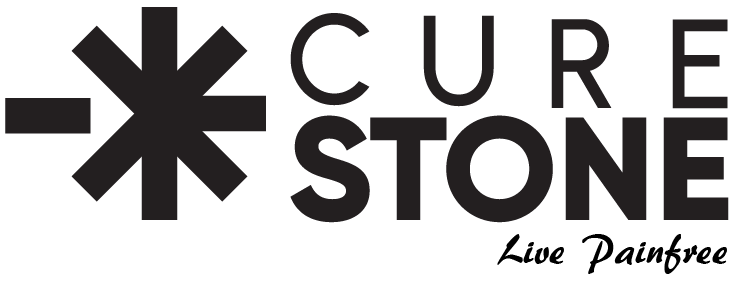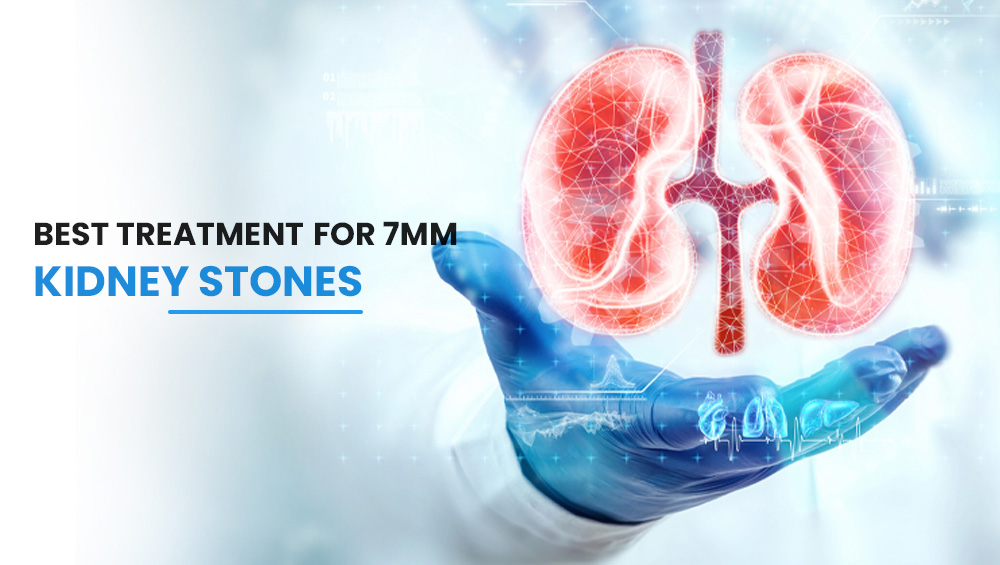Do you have a 7 mm kidney stone causing you anguish and pain? At this length, those stones are too massive to pass obviously and may cause big pain and ability fitness issues.
Dealing with a 7 mm kidney stone can be irritating and demanding. The pain, capacity for urinary obstruction, and the chance of infection can affect your first-rate of existence and general well-being. Without suitable treatment, these problems can amplify, leading to extra intense fitness worries.
Discover the great treatment alternatives for efficiently handling and eliminating a 7 mm kidney stone. From minimally invasive methods to superior strategies, know-how your alternatives will assist you alleviate pain, save you headaches, and repair your health. Learn how to take manipulate and find the right answer in your scenario.
What are the signs & symptoms of 7mm Kidney Stones?
Symptoms of 7mm Kidney Stones can vary, however due to the size, they normally purpose substantive soreness. Here are a few common signs:
- Severe Pain: Often inside the lower lower back, facet, or abdomen, and can radiate to the groin. The ache may additionally come in waves.
- Blood in Urine (Hematuria): Pink, purple, or brown urine because of the stone irritating the urinary tract.
- Frequent Urination: An expanded urge to urinate, despite the fact that best small amounts are exceeded.
- Painful Urination: Burning or soreness whilst urinating, mainly if the stone is close to the bladder.
- Nausea and Vomiting: The body’s response to intense ache or a blockage inside the urinary tract.
- Cloudy or Foul-Smelling Urine: A signal of infection, that can occur when a kidney stone is present.
- Difficulty Passing Urine: If the stone blocks the ureter, it is able to become difficult to urinate.
If any of these signs and symptoms occur, it’s vital to are trying to find clinical interest, as larger kidney stones like this generally require intervention.
What are the treatment options for 7mm Kidney Stones?
A 7mm kidney stone is considered large and often requires medical intervention, as it is unlikely to pass naturally through the urinary system. Below are the common treatment options in greater detail:
1. Medications
While medicines on my own won’t dissolve or bypass a 7mm stone, they can aid symptom relief and make passing simpler in precise eventualities. Doctors may also prescribe:
- Alpha Blockers (e.G., Tamsulosin): These medicinal drugs loosen up the muscle mass of the ureter, making it less difficult for stones to pass. They are extra powerful for stones positioned toward the bladder.
- Pain Relievers (NSAIDs, acetaminophen): To manipulate the severe ache because of kidney stones, non-steroidal anti inflammatory drugs (NSAIDs) or acetaminophen are usually encouraged.
- Anti-nausea medication: These can assist alleviate nausea and vomiting, which might be common symptoms.
- Diuretics: In some instances, those may be used to increase urine production, however this technique is extra supportive and doesn’t at once treat big stones.
2. Extracorporeal Shock Wave Lithotripsy (ESWL)
ESWL is a non-invasive process that uses sound waves to interrupt down kidney stones into smaller fragments. Here’s how it works:
- Procedure: A system out of doors the body gives you targeted surprise waves to the kidney stone, breaking it into portions small sufficient to pass evidently via the urinary tract.
- Duration: The process normally lasts 30-60 mins and is done below light anesthesia or sedation to save you discomfort.
- Recovery: After the system, the stone fragments are passed via urine over a period of days to weeks.
- Effectiveness: ESWL is typically used for stones 6-10 mm, however it may not be as powerful for hard stones or those positioned deep inside the kidney.
3. Ureteroscopy (URS)
Ureteroscopy is a minimally invasive process in which a small scope is inserted through the urethra, bladder, and ureter to either remove or split the stone:
- Procedure: A ureteroscope (a thin, bendy tube with a digicam) is exceeded via the urinary tract until it reaches the stone. The stone can be removed with tiny tools or damaged into portions using a laser.
- Laser Lithotripsy: When stones are too large to be eliminated, a laser is used to fragment them into smaller portions.
- Recovery: This process regularly requires a brief medical institution live. A transient stent may be placed inside the ureter to assist it heal and drain urine.
- Effectiveness: URS is fantastically effective for stones inside the ureter and kidney, especially for stones too large to skip or placed in difficult-to-attain regions.
4. Retrograde Intrarenal Surgery (RIRS)
RIRS is a complicated, minimally invasive technique used to treat stones in the kidney itself:
- Procedure: A bendy ureteroscope is passed via the urethra and bladder, up into the kidney. Once the stone is located, a laser breaks it into smaller portions, which might be both eliminated or allowed to skip glaringly.
- Advantages: RIRS is right for stones positioned within the kidney, particularly those that are too excessive for ureteroscopy or the ones located in tough-to-acquire regions.
- Recovery: Since RIRS is minimally invasive, recuperation is faster, with tons less ache and a shorter health facility stay in evaluation to traditional surgical remedy.
- Effectiveness: RIRS is as an alternative effective for treating stones of severa sizes, including 7mm stones, without requiring incisions.
When it comes to coping with 7mm kidney stones, treatments are usually tailored based totally at the stone’s location, size, nature and the affected person’s basic fitness. Options like ESWL, Ureteroscopy, and RIRS offer minimally invasive ways to interrupt down and dispose of the stone. Consulting with a urologist is important to selecting the first-rate course of movement for effective treatment and long-time period prevention.
Why RIRS is the Best Treatment for 7mm Kidney Stones?
When it involves treating 7mm kidney stones, Retrograde Intrarenal Surgery (RIRS) often will be the only and minimally invasive option. Here’s why RIRS is taken into consideration the first-class remedy for 7mm kidney stones:
1. Minimally Invasive Approach
RIRS does not require any external incisions. Instead, a thin, flexible ureteroscope is inserted through the natural urinary pathway (urethra, bladder, and ureter) to attain the kidney stone. This makes it a much less invasive choice compared to PCNL, which involves creating a small incision in the lower back.
Advantages:
- No external scars
- Faster recovery time
- Less pain post-procedure
2. Precision and Effectiveness
RIRS offers excessive precision in accomplishing kidney stones, particularly those located in tough-to-get admission to areas of the kidney. The ureteroscope provides a clear, magnified view, allowing the physician to accurately target the stone. Once the stone is positioned, a laser is used to interrupt it into smaller pieces for easy elimination or passing.
Compared to Extracorporeal Shock Wave Lithotripsy (ESWL), RIRS is more powerful at absolutely doing away with large stones (like 7mm) in a single session. ESWL may additionally require a couple of remedies and might not work well for stones in sure locations.
Advantages:
- High precision for breaking stones
- Effective for stones in difficult locations
- Often a one-time procedure
3. Minimal Risk of Complications
RIRS consists of fewer risks compared to other processes. For example:
PCNL involves creating a reduce inside the kidney, that can lead to bleeding, infection, and longer healing instances.
Ureteroscopy (URS) is effective but is less cushty for stones placed deep inside the kidney.
RIRS is pretty safer, with a low chance of headaches along with damage to the kidney or ureter. The process is also done underneath fashionable or regional anesthesia, lowering discomfort.
Advantages:
- Low risk of harm to the kidney or ureter
- Short medical institution stay
- Safe for diverse patient organizations, including people with higher hazard profiles
4. Complete Stone Removal
One of the largest benefits of RIRS is that it permits for entire stone elimination in a unmarried session. This reduces the probability of needing observe-up approaches. The laser technology used at some stage in RIRS breaks the stone into tiny fragments, that could both be removed or passed certainly through urine.
In evaluation, ESWL may additionally go away larger fragments behind, requiring further intervention. PCNL is effective but involves greater risks and a longer restoration time, making it less favorable for patients who want to avoid surgical operation.
Advantages:
- Complete stone removal in one procedure
- Reduces the need for follow-up treatments
- Effective for stones in various parts of the kidney
5. Faster Recovery and Less Downtime
Patients undergoing RIRS usually experience a quicker healing compared to other treatment options like PCNL. Most patients can move home the equal day or after a quick sanatorium stay. There is minimum publish-operative discomfort, and patients can return to their normal sports extra quickly.
Advantages:
- Quicker recovery time
- Minimal post-system soreness
- Short medical institution stay
6. Versatile Treatment for Different Stone Types and Locations
RIRS is appropriate for numerous sorts of stones, such as those who won’t reply well to ESWL, which include harder stones or stones placed within the lower poles of the kidney. It’s additionally effective for stones that are towards the renal pelvis or calyx, which can be harder to deal with using different techniques.
Advantages:
- Effective for specific types of stones
- Suitable for stones in tough-to-attain places
- High fulfillment price even for complicated instances
In short, for 7mm kidney stones, RIRS offers an excellent balance of safety, precision, and effectiveness. It is minimally invasive, highly accurate, and capable of removing stones in a single session with minimal risk of complications.
CureStone – Fast Relief for Kidney Stones
Kidney stones around 7mm can cause severe pain and disrupt daily life. At CureStone, we offer advanced, minimally invasive treatments like RIRS (Retrograde Intrarenal Surgery) and PCNL (Percutaneous Nephrolithotomy) to provide quick relief. Our experienced team evaluates your condition to recommend the best approach based on the stone’s size and location, ensuring effective results with minimal discomfort.
Don’t just take our word—check out our patient testimonials for real stories of relief. We’re dedicated to helping you overcome the pain and hassle of kidney stones safely and efficiently.

